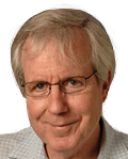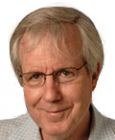
Philosophy
Letters to a Young Student: Part 3
An old man continues to hold forth to a young man
Posted February 21, 2013
Dear Professor:
Thank you again for another good letter. Since you asked me to write again if more questions came up, here is one. In your book Abyss of Madness you said that as a young man you thought it possible to discover the secrets of human nature through the study of the most severe mental illnesses. What are the secrets you have discovered after 50 years of this exploring?
Adam
Dear Adam:
I can only say that the ultimate secrets of the human psyche, if such things exist, have not unveiled themselves to me over the course of my career. I think they will remain a Holy Grail for the searcher, a utopian goal inspiring travels into the farthest reaches of madness but never being literally attained. There is however one central discovery that has occurred as a result of my journey: myself. Amid the shattered hearts, the broken minds, the annihilations, it is as if the pattern of my own life was somehow inscribed. Exploring the souls of my patients therefore has led me again and again to the depths and origins of my own lifeworld. Could it be, Adam, that the study of madness presents us all with opportunities to discover who we actually are? Could it also be that the effort to assist those who come to us presents us a chance to heal our own wounds as well?
Perhaps it would be good for me to tell you some more details about my own early experiences in this connection. My first seriously challenging patient, a young woman I met almost 40 years ago, believed with all her heart that she was a part of the Holy Trinity and that she was one with God. Her story is given in the first chapter of Abyss of Madness. She and I, over the tumultuous course of our early relationship, came to an understanding of her situation as centrally relating to a catastrophe that had occurred in her childhood: the sudden suicide of her beloved father. I saw how the tragic loss had bisected her youth into before and after, into father and no father. As our shared journey continued and her healing began, I became witness to a gradual smoothing out of the traumatic bifurcation with the emergence of feelings of furious rage, of heartbreaking sorrow, of annihilating invalidation. At some point along the way – I cannot say precisely when – it dawned on me that in looking at her life I was also seeing an image of my own. You see, my childhood also was divided into a before and an after, the separation caused by the sudden death of my mother when I was a young boy. In coming to the tragedy that had disastrously affected my patient’s development, I had been returned to the tragedy of my own. In witnessing her slow healing and recovery, in turn, my own healing – continuing down to the present day – had a chance to begin. The great German philosopher-historian Wilhelm Dilthey famously proclaimed that in the study of persons in the so-called human sciences, all understanding is a matter of “the rediscovery of the I in the Thou.” It follows from this elegant idea, to my mind anyway, that in the discovery of the Thou, we find a mirror in which our own souls are made visible.
Here are some additional thoughts that come forward as I think about your question regarding the secrets of human nature. I shall introduce them by describing the adventures of a young man I knew many years ago. He came to me just before a long psychiatric hospitalization. He said he had discovered the secret, not of human nature, but of the universe as a whole: the key to all of creation. I asked him to tell me about this amazing secret. He said it was revealed to him in a vision in which he saw the interrelatedness of all things. The vision encompassed the whole of the cosmos in a single image, abolishing all separateness and isolation in an overpowering, radiant unity. He had discovered the heart and soul of existence itself, and repeatedly shouted the secret out: “ALL IS ONE, ALL IS ONE, ALL IS ONE!”
I was curious about the personal context of this unifying vision. His life story was a sad one, involving a world in which the center failed to hold. He had been a golden child, a precocious genius who from an early age had shown stunning abilities in both science and the arts. His parents considered him to be a gift from God, filling their otherwise empty lives with a transcendent meaning. Complying with their expectations, the boy grew up with A-plus achievements in every endeavor, and the parents believed they had brought a great man into the world. The breakdown occurred on the eve of his graduation from college, a summa cum laude on the threshold of glorious success in life. One little problem tripped him up: a girlfriend he had become very attached to decided to end their relationship. His love for her, such as it was, expressed a part of him that contained, tenuously, his personal truth. Being a stellar achiever had always come easy and fit perfectly into his parents’ needs. Losing the girlfriend was different; it was a disaster beyond imagining for a boy who had so little he could call truly his own. It was the end of a life that had scarcely begun. Unspeakable agonies followed the loss, a suffering beyond all comprehension in which everything that had seemed together was now torn asunder.
This was when the vision of cosmic oneness supervened. Every atom and subatomic particle, and every galaxy supercluster came together before him, in a vast network of interdependent relations. It was a breathtakingly beautiful tapestry encompassing the totality of all existing things. People in this young man’s social world – family, friends, college teachers – thought he had gone crazy and the decision was made to hospitalize him. What he was doing, however, was putting the world back together again, reconnecting all that had fallen apart.
I will begin with what I have to say about this man with the idea that his vision was utterly, profoundly a true one. He had indeed encountered a secret of the universe, one that has been thoroughly hidden from us in this age of atomism. We think of our own lives as a matter of isolated minds existing alongside each other, little separate unit-selves dropped into the world out of their mothers’ wombs. We imagine our minds as having interiors, filled with all manner of mental contents (thoughts, desires, memories, etc.), but subsisting somehow separately from a surrounding external environment. The estrangement between internal and external is paralleled by a dualism between our bodies and our minds. The universe itself, in turn, we visualize as a vast space populated by all things great and small, some of them causally interacting with one another but each of them having its own separate and solitary existence. We are hypnotized by this alienating and fragmenting atomism, regarding it as just the way things are rather than as the ontology that it is. My young man, propelled by a catastrophic experience of the disintegration of the world, broke through the trance of this philosophy to a sense of the unity of all beings. I found his thinking to be powerful, although at the time I met him he was unable to do much with it other than to cry and shout.
Working with those who dwell in the extreme range of psychological disorder presents us with dramatic signs of the embeddedness of our very selfhood and sense of the reality of the world in contexts shared with other human beings. One sees, for example, how the “symptoms” of so-called mental illness do not emanate from a wholly internal condition afflicting the isolated individual, but instead vary as a function of the response that person encounters from others. When responses felt as objectification and invalidation are supplanted by experiences of being understood and included in the community of others, striking shifts occur in delusions and hallucinations, and chronic annihilation states recede. C.G. Jung, the great psychiatrist, acknowledged this in his famous words: “Schizophrenics cease to be schizophrenic at the moment they feel understood.” We, as clinicians, are therefore implicated in the psychological disturbances we are called upon to treat, and the wounds requiring healing in our patients are matched by the wounds we carry in our own hearts.
But there is more. The universe exists in such a way as to generate the possibility of our own coming into being, and it is as it is in part because we are here to be aware of it. Human beings are implicated in the way in which the world becomes manifest, and at the same time the study of the cosmos is the universe becoming conscious of itself. The observer and the observed, in both the natural sciences and the human sciences, are inseparable from each other, and the constituents of reality, on smaller and smaller scales, turn out to be interdependent, entangled phenomena rather than fully separable units somehow subsisting in ontological solitude.
In other words, Adam, my young man was absolutely right. You might wonder what happened to him. It is sad. He was diagnosed on the basis of the grandiose euphoria he showed: manic-depressive illness was the Dx. The treatment provided to him included multiple hospitalizations, a massive amount of electroconvulsive therapy, and an ever-varying succession of antipsychotic drugs. The last time I saw him, fifteen years into this so-called treatment, he was doing poorly – depressed, confused, unable to work, obese, and… no girlfriend. I wonder what the outcome might have been if someone instead had been able to sit down with him – for a day, or a week, or a year, or a decade – and discuss what it meant that all is one. Is it not possible that good things might have emerged from such conversations?
A final thought regarding the story I have been telling: how is it that this young man, in captivity to his parents but also in a struggle to render a shattered universe whole, was a mirror in which I could find a reflection of myself? When I was a young college student, scarcely beyond your age Adam, I made a discovery of my own that was very similar. In the context of an exposure to Zen Buddhism, it came to me that all dualism is false: every one of the great contrasts in our culture’s history and philosophy – internal/external, matter/spirit, masculine/ feminine, good/evil, freedom/determinism, I/You – were illusory, and our belief in them was a trance from which we needed to awaken. Looking back, I see the philosophy of monistic adualism I then adopted as an early answer to the shattering of my own world, and to the lonely isolation into which I plunged in the aftermath of my mother’s death. I also see it as a precursor to the unifying theories and philosophical ideas in which I have come to believe.
There you are, my friend, and I am hoping these stories and reflections will be of help to you. Please stay in touch.
George Atwood



